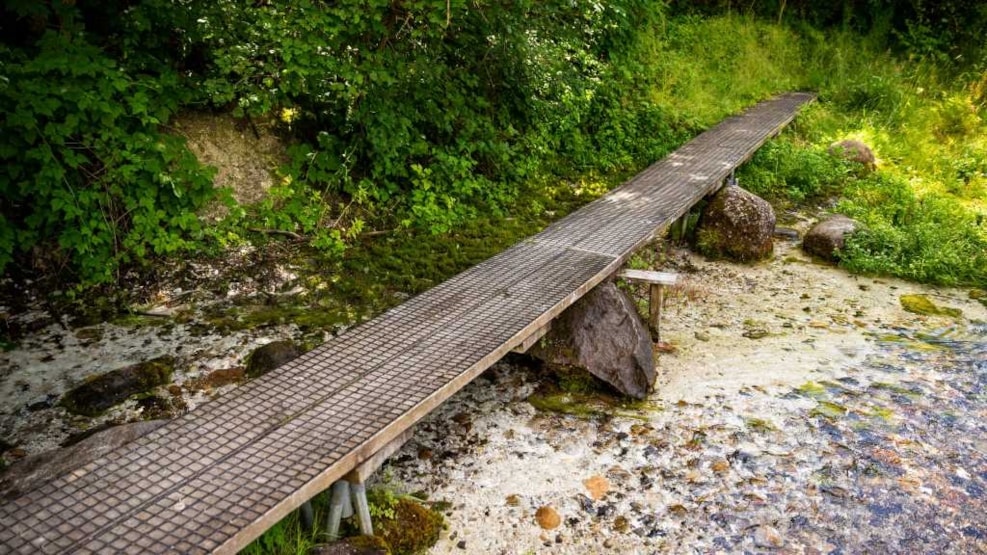
Lille Blåkilde
Lille Blåkilde literally translates to ‘‘Small Blue spring’’. The spring is one of the largest springs in the Rold Forest area, with a waterflow of approximately 90 liters per second and it drains an area of 10-12 square kilometers. The spring is a fracture spring, meaning that the water emerges through several small cracks in the limestone, and after about 70 meters runs into Lindenborg Å.
The spring is situated northwest of Nørreskov and can only be reached by foot. A good place to start your trip is from the parking area situated halfway along Rebild Kirkevej. On the map over Rebild Bakker, Lille Blåkilde is number 30.
The limestone is clearly visible under the trees on the right side of the steps up from Lille Blåkilde. On the left side of the steps, a thin layer of topsoil covers the limestone. This creates a rare natural habitat called chalk grassland or calcareous grassland. There are some lime-loving plants on the slope – among others: primrose, cowslip, canicula, and the early-purple Orchid.
In addition, there are plants leftover as evidence to testify that the slope was woodland until recently. These include Solomon's seal and Baneberry.
The area is protected and digging up plants is not allowed.
The wildlife around the spring
The spring contains a number of the common, freshwater species such as caddisflies, stoneflies and mayflies.
But the most famous species in the spring is the caddisfly Apatania Muliebris. It is usually only found in brooks high up in the Norwegian mountains and in the Alps. However, because the spring maintains a constant temperature of 7.5°C year round, it can be found in Lille Blåkilde.
At the outlet into Lindenborg Å, in the month of May, you can often find many small eel-like fish stuck to the bottom, called the brook lamprey or nine-eyed eels.
It is not allowed to collect plants or animals, nor step into the spring, as the area is protected.
Ancient history
A few hundred meters south of the spring, the remains of ancient roads, a row of stones, and stone circles can be found. Above the spring is a site where dolmens from the Stone Age and the burial mounds of the Bronze Age, are located closest to each other in Denmark. Thus, we known that for the last 6000 years people have lived in the area, close to the spring.